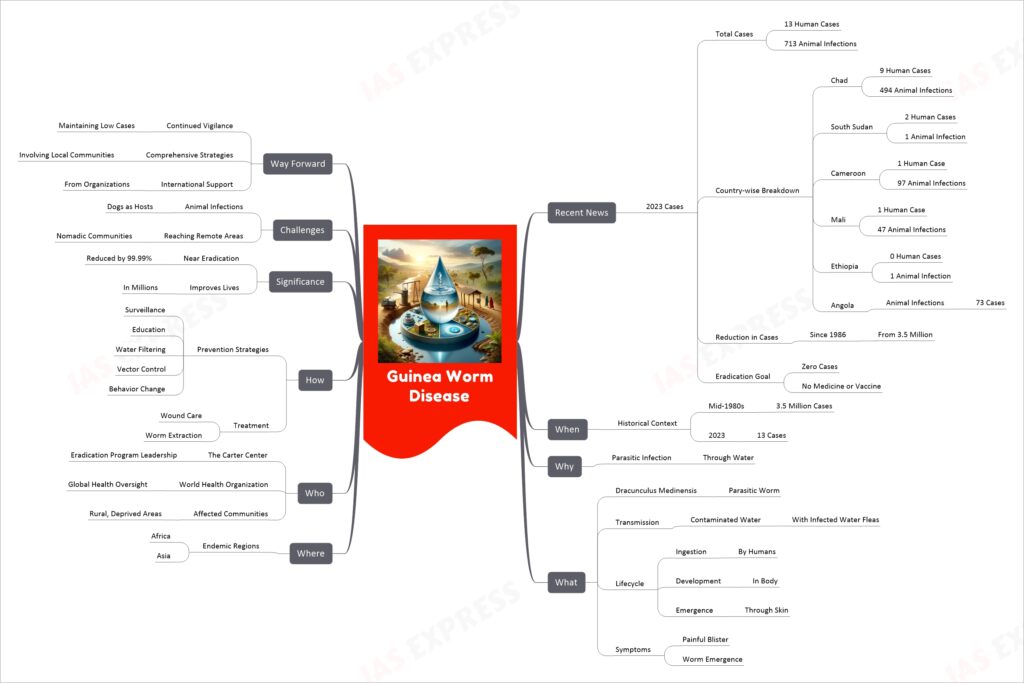Guinea Worm Disease

Guinea worm disease, caused by the parasitic worm Dracunculus medinensis, is a crippling ailment transmitted through drinking water contaminated with infected water fleas. Once prevalent with 3.5 million cases in the mid-1980s across Africa and Asia, the disease has seen a dramatic reduction, with only 13 human cases reported worldwide in 2023. The Carter Center, leading the eradication efforts since 1986, has brought the disease to the brink of eradication without the use of medicine or vaccines, relying instead on community-based interventions like surveillance, education, water filtering, and vector control. Although the disease is rarely fatal, it leads to severe disability and affects the most deprived and isolated communities. The final push towards complete eradication faces challenges such as animal infections, especially in dogs, and reaching remote or nomadic communities.
If you like this post, please share your feedback in the comments section below so that we will upload more posts like this.

